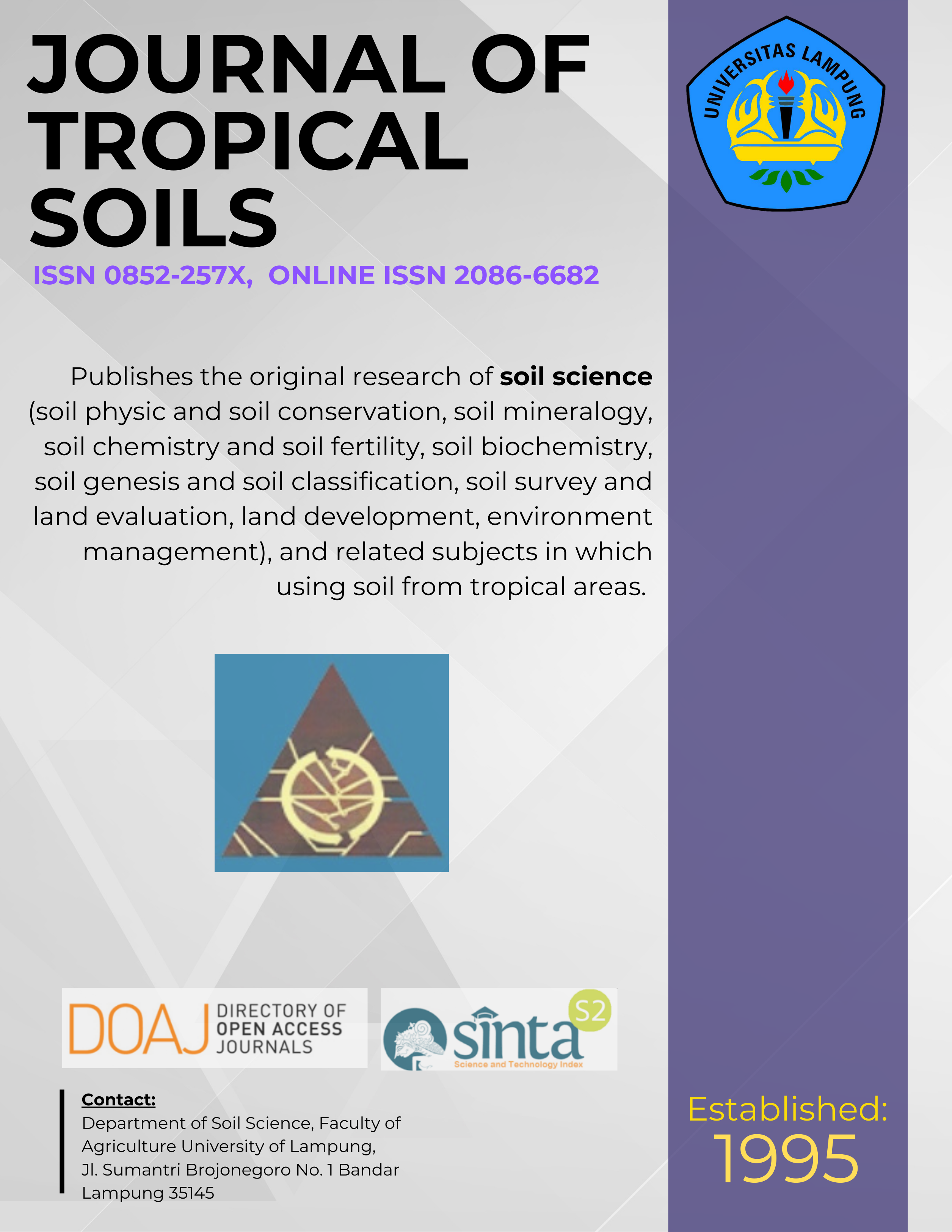The Effect of Soil Moisture Content and Animal Manure Application on the Growth of Mendong (Fimbristylis globulosa (Retz.) Kunt)
Main Article Content
Abstract
The objective of the research was to study the interaction between soil moisture content and animal manure application on the growth of Mendong (Fimbristylis globulosa (Retz.) Kunt). The experiment was conducted in May until September 2016 in Kampung Lembur Sawah, Kamulyan Village, Manonjaya Subdistrict, Tasikmalaya Regency. A pot experiment was performed using a factorial design consisting of two factors and three replicates. The factors were soil moisture content (K) consisting of four levels i.e. k1 (100% field capacity (FC)), k2 (150% FC), k3 (200% FC), and k4 (250% FC); and animal manure application (P) consisting of p1 (cattle manure), p2 (broiler chicken manure), and p3 (sheep manure). The indicators of plant growth, i.e. plant height, number of tiller, fresh weight and dry weight of plant biomass, shoot/root ratio, percentage of the >75cm-long stems, water consumption, and water use efficiency (WUE) were measured. The results showed that there was an interaction effect between the soil moisture content and animal manure application on the number of tiller at 45 days after planting (DAP), the percentage of the >75 cm-long stems, and the water consumption. The sheep manure application at any levels of soil moisture content resulted in better effect on the growth of Mendong, water use efficiency, and quality of stem (the percentage of the >75cm-long stems). The soil moisture content above the field capacity resulted in better effect on the growth of Mendong, indicating that Mendong is more suitable to grow on the land with the soil moisture content above the field capacity or saturated soil during the whole growing period.
Â
Keywords: Manure, Mendong, soil moisture content
Downloads
Article Details
Issue
Section
License for Authors
Authors who publish with this journal agree to the following terms:
- Authors retain copyright and grant the journal right of first publication with the work simultaneously licensed under a Creative Commons Attribution License that allows others to share the work with an acknowledgement of the work's authorship and initial publication in this journal.
- Authors are able to enter into separate, additional contractual arrangements for the non-exclusive distribution of the journal's published version of the work (e.g., post it to an institutional repository or publish it in a book), with an acknowledgement of its initial publication in this journal.
- Authors are permitted and encouraged to post their work online (e.g., in institutional repositories or on their website) prior to and during the submission process, as it can lead to productive exchanges, as well as earlier and greater citation of published work (See The Effect of Open Access).
License for Regular Users
Other regular users who want to cite, distribute, remix, tweak, and build upon author’s works, even for commercial purposes, should acknowledge the work’s authorship and initial publication in this journal, licensed under a Creative Commons Attribution License.

